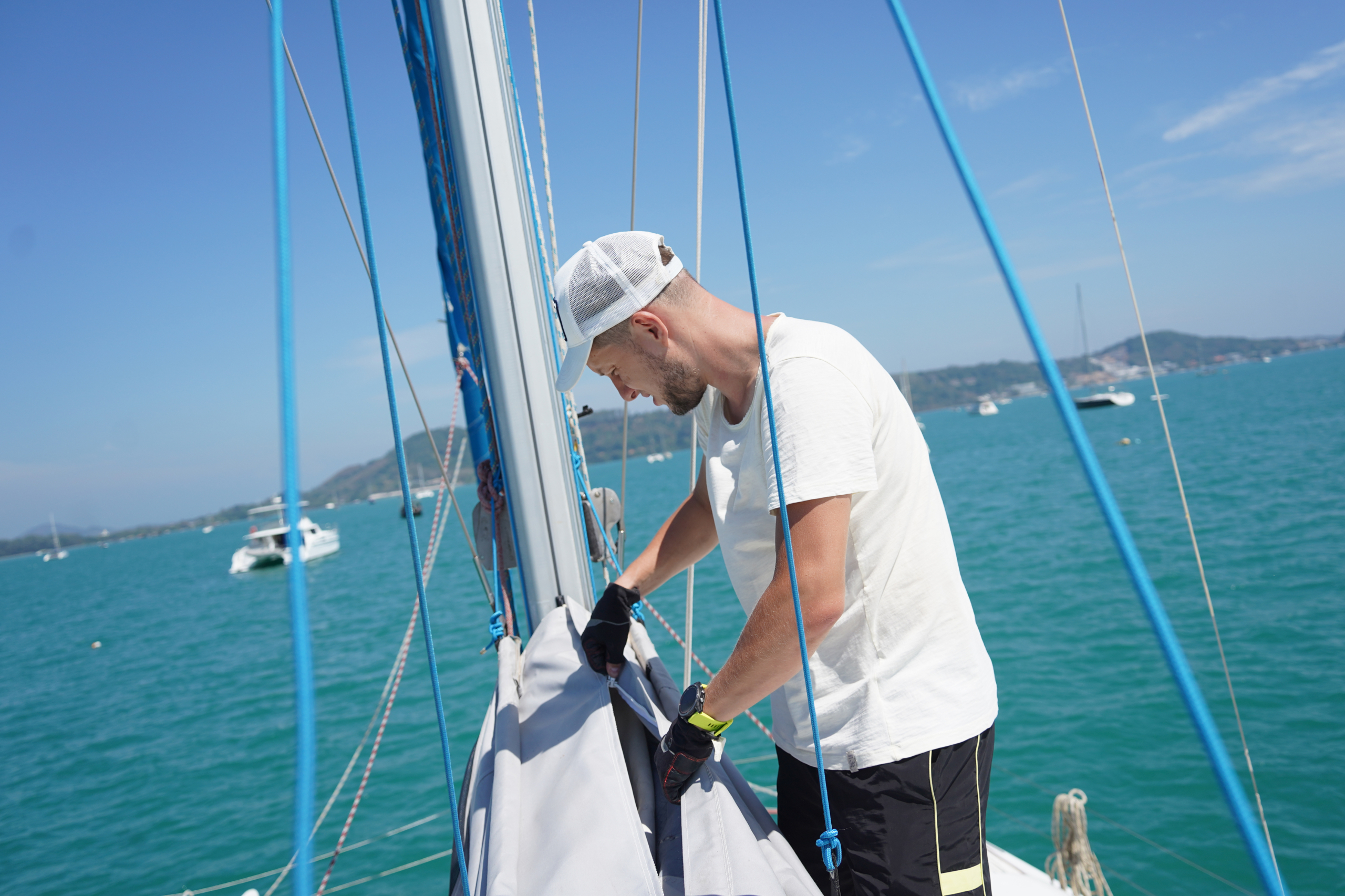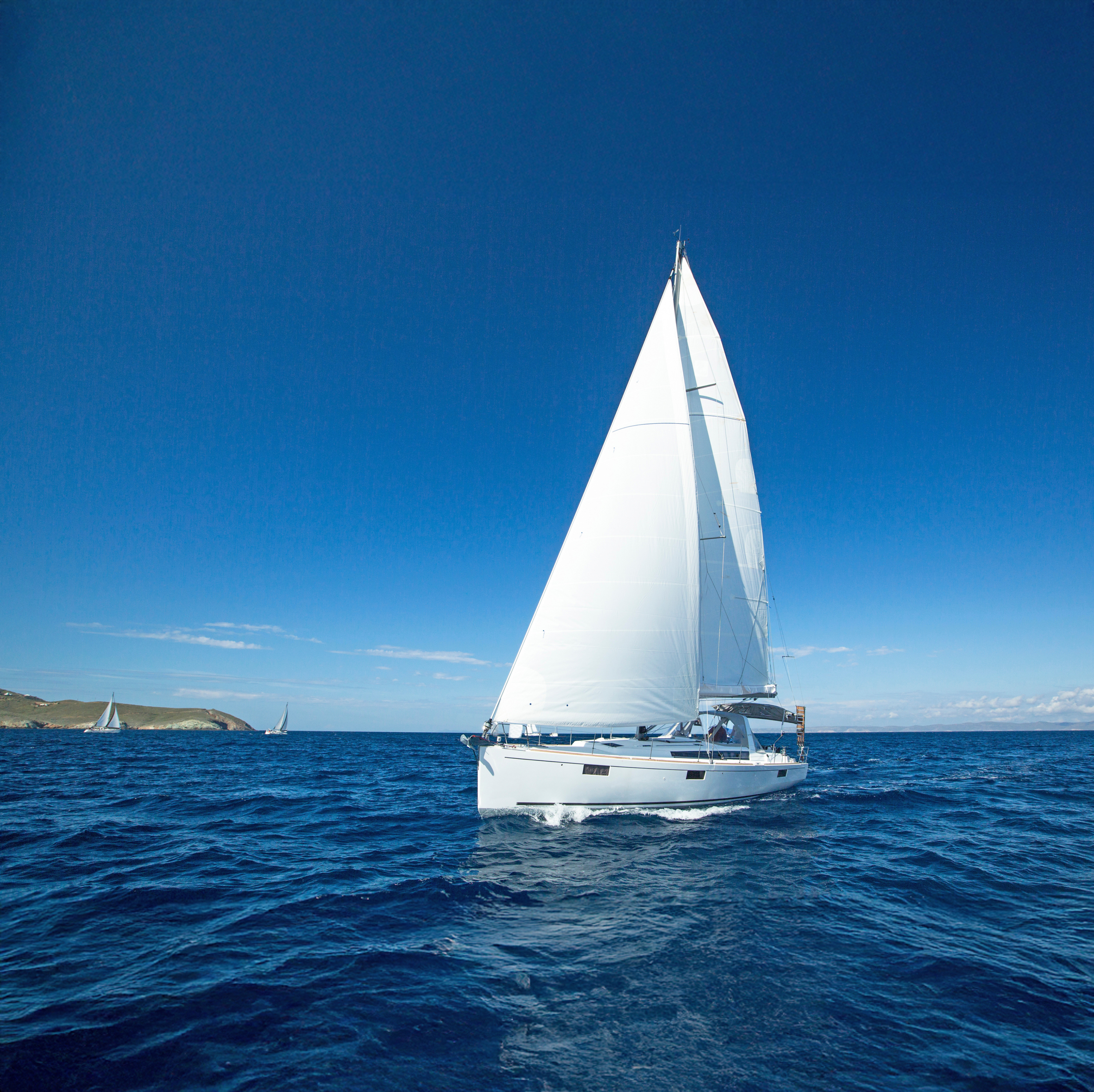
When it comes to looking after your sails, a little care goes a long way. “The best practice is to pack sails into their bags and store them in a dry, well-ventilated space,” says Mark Hunter, owner of Vacuwash Australia, a specialist cleaning service for yacht sails, marine canvas, tents, and outdoor fabrics based on Sydney’s Northern Beaches. However, as yachts grow larger, this becomes more difficult with removing, folding, and stowing sails often requiring a lot of extra hands.
“While it is possible to clean sails yourself, it’s not usually recommended,” says Hunter. “Giving your spinnaker a rinse after it’s been doused in salt water is fine so long as you have space to dry it properly. Spot cleaning usually results in spotty sails. The entire sail really needs cleaning for best results. Sail fabrics vary widely, as do the types of dirt and mould they attract. Cleaning them correctly takes time, space, and experience.” We asked Hunter to share some key advice to help you maintain your sails.
Why is it important for owners of yachts and sailing catamarans to wash their sails?
Every major sailmaker recommends annual sail cleaning to remove salt, dirt, and mould. Just like the rest of your boat, sails need regular maintenance. Beyond being unsightly and smelly, trapped grime can degrade the materials and shorten their lifespan costing you more in the long run.
Is it safe to clean sails?
Absolutely. The cleaning process we use at Vacuwash is gentle and proven and has been used to clean thousands of sails and all types of canvas with no damage. There is no harsh scrubbing, agitation, heat, or pressure-washing involved.
Will it weaken the stitching?
No, the cleaning process does not harm stitching. What really breaks down thread is UV exposure. UV strips on sails, as well as dodgers, biminis and other canvas items, will deteriorate over time whether cleaned or not. That’s why it is recommended to re-stitch canvas items while they’re off the boat for cleaning.
Wouldn’t it be better to just buy new sails?
Not necessarily. A well-made sail should last over 10 years depending on use, and Vacuwash has successfully cleaned sails over 40 years old that still have life left in them. If your sails spend most of their time on the rig exposed to the elements, cleaning is an essential step in extending their usable life. Typically, the cost of cleaning will be around 10 per cent of the replacement cost to purchase new sails. Given that sail and canvas fabric prices vary widely, cleaning is always the more cost-effective option.
Will cleaning my sails make my boat faster?
Clean sails are easier to trim and perform better. And just like when you polish your boat and admire the shine, you’ll be more likely to pay attention to your sails, trim them more often, and sail faster.
Tips for different sails
FURLING HEADSAILS: These should be aired regularly, ideally by going sailing. After rain, a furled sail traps moisture, and when the sun returns, vertical green mould often follows. Treating your furling sail with a product such as McLube Sailkote Plus when it’s new or near-new can significantly reduce this problem.
MAINSAILS ON THE BOOM: If your mainsail is flaked on the boom, it needs a proper boom cover, not one that’s torn or worn through. Water will find its way in and pool between the folds, encouraging mildew.
Make sure the clew end is enclosed to prevent birds from nesting. Standard boom bag zips tend to leak, so opt for a drop-over bag that clips underneath the boom. You can still use lazy jacks, best to just pull them forward to the mast before fitting the cover. Never leave the sail head exposed with the halyard attached as UV and water damage will destroy it faster than you can save up for a replacement.
SPINNAKERS: Spinnakers and furled asymmetrical sails should always be stored dry and salt-free. These sails are not designed to live on the rig.
Visit vacuwash.com.au
